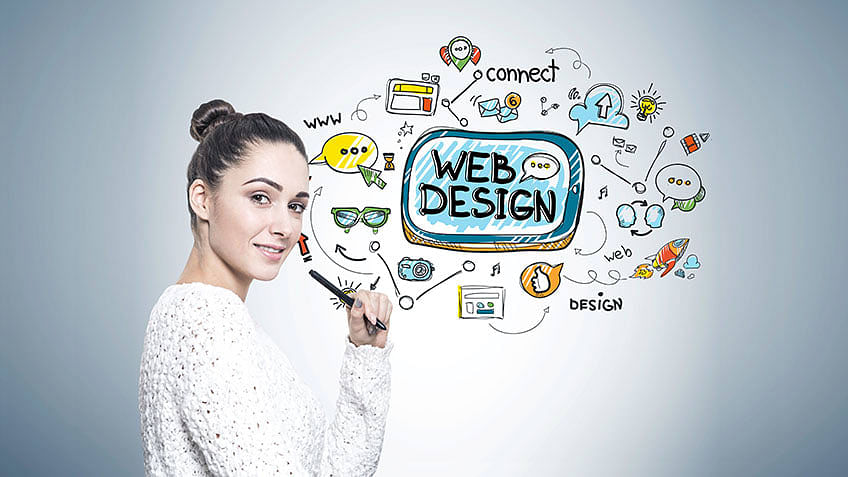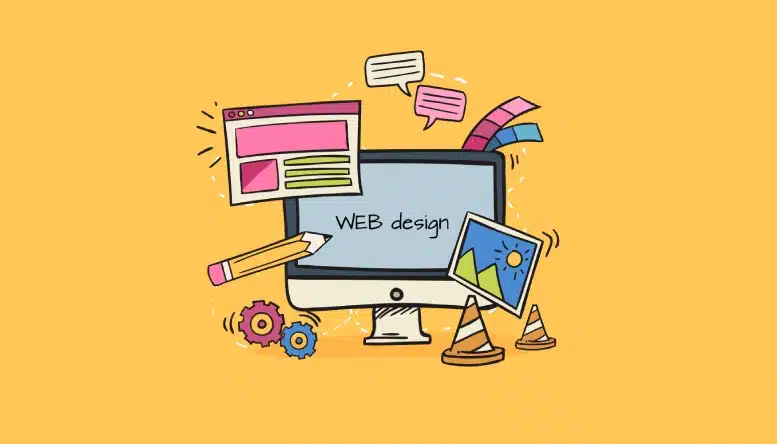Aligned Position Web Design: Professional Web Development to Maximize Your Online Impact
Aligned Position Web Design: Professional Web Development to Maximize Your Online Impact
Blog Article
The Most Effective Kinds of Web Style to Improve User Experience and Engagement
In the ever-evolving landscape of electronic interaction, the effectiveness of Web design significantly influences user experience and engagement. Different style methods, such as minimalist, responsive, and interactive layouts, each offer distinct benefits that can accommodate diverse customer requirements. Recognizing which sorts of website design ideal serve these objectives can be critical for companies intending to boost consumer contentment and retention. The inquiry remains: which layout elements really resonate with users and foster meaningful engagement? The expedition of these concepts exposes critical insights that might redefine your technique to Web style.
Minimal Web Layout
As electronic landscapes end up being increasingly chaotic, minimal Web style has arised as an effective method to improving customer experience. This design approach focuses on simplicity, concentrating on vital components while eliminating unnecessary distractions. By making use of sufficient white area, uncomplicated navigating, and a minimal shade scheme, minimalist layout fosters clarity and routes customer interest to crucial web content.
The core principle of minimalist website design is to produce a seamless communication for individuals. By lowering cognitive tons, customers can promptly understand information without feeling overwhelmed. This straight strategy not just boosts use but likewise motivates interaction, as visitors are more probable to check out a website that is aesthetically enticing and simple to browse.
Additionally, minimal design often highlights typography and imagery, utilizing these components strategically to convey messages efficiently. In essence, minimalist Web layout is not simply a trend; it is a thoughtful methodology that recognizes the value of user-centered layout.
Responsive Website Design
In today's varied digital atmosphere, responsive Web design has actually come to be necessary for developing a smooth user experience across a wide variety of tools. As individuals access sites on smartphones, tablets, desktops, and laptop computers, the capacity of a website to adjust its format and web content to various display sizes and resolutions is crucial.
Receptive Web style uses flexible grids, pictures, and CSS media inquiries to ensure that Web content exists optimally, no matter the tool used. This strategy not just enhances the visual allure of a website however also dramatically improves use. Individuals are most likely to involve with a site that offers a constant experience, as it gets rid of the stress of having to zoom in or scroll exceedingly.
Additionally, internet search engine, including Google, prioritize mobile-friendly internet sites in search rankings. By taking on responsive design, organizations can enhance their presence and reach a more comprehensive audience. This strategy additionally streamlines site maintenance, as a single version of the website can satisfy all devices, lowering the need for several versions. In summary, receptive Web style is a fundamental technique that enhances individual experience, engagement, and general satisfaction.
Interactive Website Design
Responsive Web layout lays the foundation for improving customer experience, however interactive website design takes this a step additionally by engaging customers in a much more vibrant way - Aligned Position Web Design. By integrating components such as animations, clickable prototypes, and real-time responses, interactive Web style mesmerizes customers, attracting them right into a richer surfing experience
This method not only fosters engagement but additionally encourages customers to explore material actively instead than passively eating it. Methods such as gamification, where users make rewards for finishing jobs, can considerably boost the time spent on a site and improve total contentment. Moreover, interactive features can streamline intricate information, making it a lot more delightful and digestible.

Incorporating over here interactive style components can also bring about higher conversion rates, as customers are more likely to engage with a website that proactively involves them. Aligned Position Web Design. Inevitably, interactive Web design transforms individual experiences right into memorable trips, making sure that visitors return time and again
Apartment Layout
Characterized by its minimalistic technique, flat design highlights simplicity and performance, removing unneeded elements and concentrating on necessary functions. This layout ideology focuses on use, making certain that individuals can navigate user interfaces easily and performance. By employing a clean visual, level design gets rid of the clutter frequently found in more luxuriant styles, thereby improving customer concentrate on content and performance.
The hallmark of level layout depends on its use bold shades, simple typography, and geometric shapes. These components add to a visually enticing user interface that is both friendly and modern. Furthermore, flat layout promotes a feeling of quality, enabling individuals to discern vital activities and information without diversion.
Moreover, flat layout is specifically efficient in responsive Web design, as its simplicity translates well across various tools and display sizes. By focusing on essential features, level design not just satisfies individual needs but additionally encourages seamless interaction, making it an essential component of efficient Web layout methods.
Flexible Web Layout
Flexible Web layout personalizes the user experience by creating several fixed layouts customized to various screen sizes and devices. Unlike responsive layout, which fluidly changes a solitary format, flexible layout employs unique layouts for particular breakpoints, guaranteeing ideal discussion on various systems. This approach enables developers to concentrate on the special characteristics of each tool, enhancing usability by providing exactly what customers need based on their context.
One of the main advantages of adaptive Web layout is its ability to optimize load times and efficiency. By serving customized material and photos that fit the individual's tool, web sites can reduce information usage and boost loading rates. This is especially valuable for customers with slower links or minimal information strategies.

In addition, adaptive style facilitates an extra constant and controlled branding experience. Since designers create several layouts, they can make certain that the aesthetic components line over at this website up with the brand name's identification throughout different platforms - Aligned Position Web Design. This leads to a natural individual experience, improving involvement and advertising individual retention
Final Thought
Finally, the assimilation of minimal, responsive, and interactive Web layout principles considerably boosts user experience and engagement. Minimal style cultivates clearness and focus, while responsive style ensures flexibility throughout different devices, advertising accessibility. Interactive layout astounds users through vibrant aspects, encouraging exploration and personalization. Collectively, these style approaches add to the development of easy to use environments that not just boost complete satisfaction but likewise drive greater conversion rates, underscoring their important significance in modern Web design methods.

Minimalist layout promotes clarity and focus, while responsive layout makes certain flexibility throughout different devices, promoting access. Jointly, these style comes close to contribute to the development of straightforward settings that not only improve satisfaction but also drive greater conversion rates, highlighting their important significance in contemporary Web design strategies.
Report this page